AP Score Distribution 2024 – Test Exam Chart: Literature, Biology, Calculus, Statistics, Language, Chemistry
Advanced Placement (AP) scores are crucial indicators of how well students have mastered the content of AP courses. They play an important role in college admissions, course placement, and potential college credit. Below, you can see how AP scores are calculated, and the AP Score Distribution for 2024, plus a comprehensive FAQ section.
If you are looking for the AP Score release dates, please see our When do AP Scores Come Out page.
What Are AP Scores?
AP scores are standardized test scores awarded to students who take AP exams, which are designed to measure mastery of college-level material. The AP exam scores range from 1 to 5:
- 5: Extremely well-qualified
- 4: Well-qualified
- 3: Qualified
- 2: Possibly qualified
- 1: No recommendation
Colleges and universities use these scores to determine if students are eligible for college credit or advanced placement in certain subjects.
How Are AP Scores Calculated?
AP scores are calculated based on a combination of multiple-choice and free-response sections. The multiple-choice section is scored by a machine, while the free-response questions are graded by trained educators during the AP Reading sessions. These raw scores are then combined and converted into a scaled score from 1 to 5. The conversion process accounts for the difficulty level of the exam, ensuring fairness across different test versions.
The AP Score Distribution in 2024 – Chart.
Each year, the College Board releases the score distribution for each AP exam, showing the percentage of students who scored 1, 2, 3, 4, or 5. This distribution helps students and educators understand how well students performed relative to others nationwide. This is the AP Score Distribution for 2024. We have also added the AP Score Distribution for 2023, further down the page.
AP Score Distribution 2024:
| Exam | 5 | 4 | 3 | 2 | 1 | 3+ |
|---|---|---|---|---|---|---|
| AP Research | 12% | 26% | 47% | 12% | 3% | 85% |
| AP Seminar | 9% | 20% | 60% | 10% | 1% | 89% |
| Exam | 5 | 4 | 3 | 2 | 1 | 3+ |
|---|---|---|---|---|---|---|
| AP 2D Art & Design | 11% | 29% | 43% | 14% | 3% | 83% |
| AP 3D Art & Design | 7% | 24% | 41% | 23% | 5% | 72% |
| AP Art History | 14% | 21% | 28% | 25% | 12% | 63% |
| AP Drawing | 15% | 31% | 38% | 13% | 3% | 84% |
| AP Music Theory | 19% | 18% | 24% | 25% | 14% | 61% |
| Exam | 5 | 4 | 3 | 2 | 1 | 3+ |
|---|---|---|---|---|---|---|
| AP English Language & Composition | 9% | 21% | 24% | 29% | 17% | 54% |
| AP English Literature & Composition | 13% | 27% | 32% | 17% | 11% | 72% |
| Exam | 5 | 4 | 3 | 2 | 1 | 3+ |
|---|---|---|---|---|---|---|
| AP African American Studies | 15% | 30% | 28% | 19% | 8% | 73% |
| AP Comparative Government & Politics | 16% | 24% | 33% | 15% | 12% | 73% |
| AP European History | 13% | 34% | 25% | 21% | 7% | 72% |
| AP Human Geography | 18% | 20% | 18% | 14% | 30% | 56% |
| AP Macroeconomics | 16% | 21% | 25% | 23% | 15% | 62% |
| AP Microeconomics | 17% | 25% | 23% | 21% | 14% | 65% |
| AP Psychology | 18% | 23% | 20% | 12% | 27% | 61% |
| AP United States Government & Politics | 24% | 25% | 24% | 18% | 9% | 73% |
| AP United States History | 13% | 33% | 26% | 20% | 8% | 72% |
| AP World History | 12% | 32% | 20% | 28% | 9% | 64% |
| Exam | 5 | 4 | 3 | 2 | 1 | +3 |
|---|---|---|---|---|---|---|
| AP Calculus AB | 21% | 28% | 15% | 23% | 13% | 64% |
| AP Calculus BC | 45% | 22% | 13% | 15% | 5% | 80% |
| AP Computer Science A | 24% | 22% | 20% | 11% | 23% | 66% |
| AP Computer Science Principles | 11% | 21% | 33% | 21% | 14% | 65% |
| AP Precalculus | 25% | 24% | 26% | 15% | 10% | 75% |
| AP Statistics | 17% | 22% | 23% | 16% | 22% | 62% |
| Exam | 5 | 4 | 3 | 2 | 1 | 3+ |
|---|---|---|---|---|---|---|
| AP Biology | 16% | 23% | 29% | 22% | 10% | 68% |
| AP Chemistry | 17% | 27% | 31% | 17% | 8% | 75% |
| AP Environmental Science | 9% | 27% | 18% | 26% | 20% | 54% |
| AP Physics 1 | 8% | 18% | 20% | 27% | 27% | 46% |
| AP Physics 2 | 15% | 18% | 35% | 25% | 7% | 68% |
| AP Physics C: Electricity and Magnetism | 27% | 23% | 17% | 20% | 13% | 67% |
| AP Physics C: Mechanics | 23% | 29% | 23% | 14% | 11% | 75% |
| AP Psychology | 18% | 23% | 20% | 12% | 27% | 61% |
| Exam | 5 | 4 | 3 | 2 | 1 | 3+ |
|---|---|---|---|---|---|---|
| AP Chinese Language and Culture | 50% | 20% | 17% | 6% | 7% | 87% |
| AP French Language and Culture | 14% | 24% | 33% | 23% | 6% | 71% |
| AP German Language and Culture | 24% | 18% | 25% | 22% | 11% | 67% |
| AP Italian Language and Culture | 20% | 22% | 29% | 18% | 11% | 71% |
| AP Japanese Language and Culture | 47% | 10% | 17% | 8% | 18% | 74% |
| AP Latin | 12% | 17% | 28% | 23% | 20% | 57% |
| AP Spanish Language and Culture | 21% | 31% | 31% | 14% | 3% | 83% |
| AP Spanish Literature and Culture | 9% | 23% | 34% | 22% | 12% | 66% |
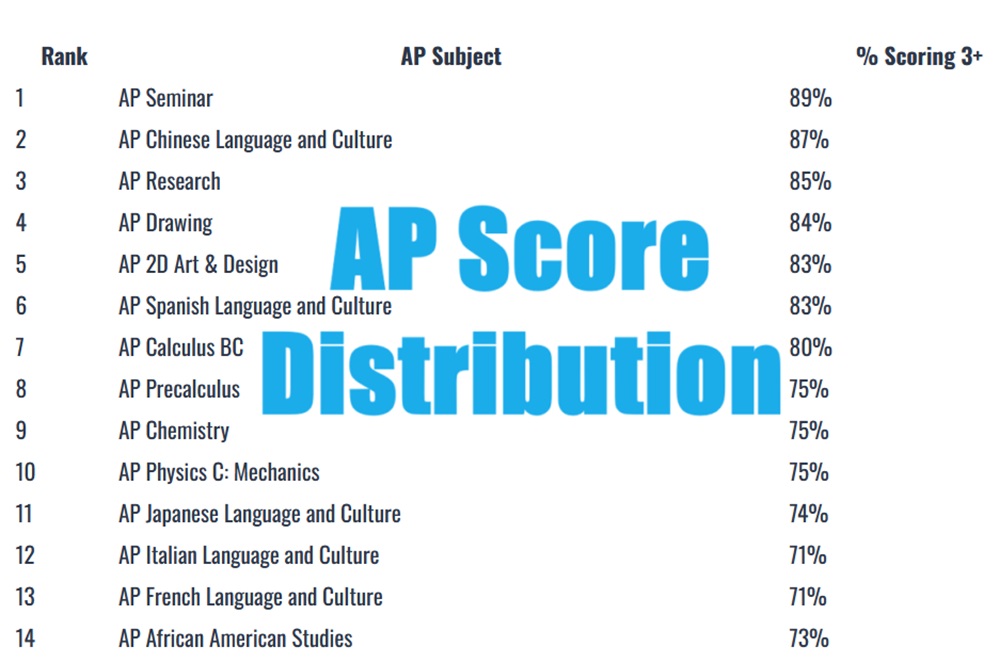
You can also view the AP scores for individual courses, such as Biology and Mathematics, below:
AP BIO Score Distribution 2024 (Biology).
The AP Biology exam is a rigorous test covering a wide range of biological concepts. Here’s the AP Biology score distribution for 2024:
- 5: 13.3%
- 4: 21.4%
- 3: 36.2%
- 2: 23.3%
- 1: 5.8%
- Scores 3+: 70.9%
This distribution reflects the challenges of the AP Biology exam and provides insight into how students performed on a national level, with nearly 71% of students scoring 3 or higher.
AP LIT Score Distribution 2024 (Literature).
The AP Literature exam assesses students’ abilities to analyze and interpret literary texts. The score distribution for 2024 is as follows:
- 5: 8.1%
- 4: 21.4%
- 3: 31.5%
- 2: 32.1%
- 1: 6.8%
- Scores 3+: 61.0%
These figures help students understand the competitive nature of the AP Literature exam, with 61% of students achieving a score of 3 or higher.
AP Lang Score Distribution 2024 (Language).
The AP Language and Composition exam focuses on rhetorical analysis and effective argumentative writing. Here’s the score distribution for 2024:
- 5: 10.7%
- 4: 20.2%
- 3: 31.4%
- 2: 25.2%
- 1: 12.4%
- Scores 3+: 62.3%
Understanding these numbers is crucial for students aiming to achieve high scores in AP Language, where 62.3% of students scored 3 or above.
AP Calculus and Statistics Score Distribution 2024.
AP Mathematics exams include Calculus AB, Calculus BC, and Statistics. Here’s the score distribution for these exams in 2024:
Calculus AB:
- 5: 18.8%
- 4: 14.7%
- 3: 22.9%
- 2: 23.6%
- 1: 20.0%
- Scores 3+: 56.4%
Calculus BC:
- 5: 41.0%
- 4: 17.6%
- 3: 20.9%
- 2: 6.9%
- 1: 13.5%
- Scores 3+: 79.5%
Statistics:
- 5: 16.5%
- 4: 20.8%
- 3: 24.2%
- 2: 17.2%
- 1: 21.3%
- Scores 3+: 61.5%
Each math exam has its own set of challenges, reflected in these distributions. For example, nearly 80% of students scored 3 or higher in Calculus BC, showcasing its relative strength among test-takers.
AP Chemistry and Physics Score Distribution 2024.
AP Science exams include subjects like Chemistry, Physics, and Environmental Science. Here’s how students scored in these exams for 2024:
Chemistry:
- 5: 10.9%
- 4: 16.1%
- 3: 26.1%
- 2: 23.7%
- 1: 23.2%
- Scores 3+: 53.1%
Physics 1:
- 5: 6.6%
- 4: 18.3%
- 3: 23.5%
- 2: 29.3%
- 1: 22.3%
- Scores 3+: 48.4%
Environmental Science:
- 5: 8.3%
- 4: 22.8%
- 3: 25.4%
- 2: 22.3%
- 1: 21.2%
- Scores 3+: 56.5%
These distributions provide a snapshot of how students performed in various science subjects. For instance, 56.5% of students in Environmental Science scored 3 or higher.
AP Arts Score Distribution 2024.
AP Arts courses include subjects like Studio Art, Art History, and Music Theory. Here’s the score distribution for 2024:
Art History:
- 5: 12.0%
- 4: 19.1%
- 3: 24.8%
- 2: 26.0%
- 1: 18.0%
- Scores 3+: 55.9%
Studio Art: Drawing:
- 5: 15.5%
- 4: 35.3%
- 3: 39.4%
- 2: 8.7%
- 1: 1.1%
- Scores 3+: 90.2%
Music Theory:
- 5: 21.1%
- 4: 18.9%
- 3: 26.3%
- 2: 22.0%
- 1: 11.6%
- Scores 3+: 66.3%
These scores help students understand how their artistic abilities are evaluated on a national level. Notably, 90.2% of Studio Art: Drawing students scored 3 or higher, reflecting a high level of achievement in that area.
Why is the “3+” column in AP Scores Included?
The “3+” column in AP score distributions shows the percentage of students who scored 3 or higher on the exam. This is important because a score of 3 is generally considered a passing score, and it’s the minimum score required by many colleges and universities to grant college credit or advanced placement in that subject.
Here’s why the “3+” column is highlighted:
- College Credit and Placement: Most colleges and universities in the United States accept a score of 3 or higher for credit or placement. By showing the percentage of students who scored 3 or above, the “3+” column gives a clear picture of how many students met or exceeded this threshold.
- Indicator of Mastery: A score of 3 is categorized as “Qualified,” meaning the student has demonstrated sufficient understanding of the subject matter to be considered for college credit or placement. The “3+” column aggregates the scores of students who have shown at least this level of mastery.
- Comparison Across Exams: The “3+” percentage allows for easy comparison of how students performed across different AP exams. For instance, if 80% of students scored 3 or higher on one exam, but only 50% did on another, it suggests that the former exam may have been easier for students or that students were better prepared for that subject.
- Focus on Success Rates: The “3+” column is often used by educators and administrators to evaluate the overall success of their AP programs. A higher percentage in this column typically indicates a stronger performance by students and can be used to assess the effectiveness of teaching methods and resources.
The AP Score Distribution in 2023.
To provide context for the 2024 distributions, it’s useful to look at the previous year’s data. The AP score distribution in 2023 showed similar trends, but there are always fluctuations based on the exam content and student preparedness.
For instance, in 2023, many students found the AP Physics 1 exam particularly challenging, resulting in a lower percentage of students scoring 5. Comparing these distributions year over year can highlight shifts in difficulty and student achievement.
AP Score Distribution 2023:
| Exam | 5 | 4 | 3 | 2 | 1 | 3+ |
|---|---|---|---|---|---|---|
| AP Research | 13.3% | 26.4% | 44.7% | 12.5% | 3.1% | 84.4% |
| AP Seminar | 11.4% | 19.7% | 53.9% | 11.2% | 3.8% | 85% |
| Exam | 5 | 4 | 3 | 2 | 1 | 3+ |
|---|---|---|---|---|---|---|
| AP 2D Art & Design | 11.5% | 31.5% | 40.7% | 14.4% | 2% | 83.6% |
| AP 3D Art & Design | 7.1% | 25.2% | 39.9% | 23.5% | 4.4% | 72.1% |
| AP Art History | 13.8% | 23.8% | 27% | 23.8% | 11.6% | 64.6% |
| AP Drawing | 15.7% | 32.9% | 36.1% | 13.1% | 2.1% | 84.8% |
| AP Music Theory | 19.8% | 16.9% | 24% | 24.1% | 15.2% | 60.7% |
| Exam | 5 | 4 | 3 | 2 | 1 | 3+ |
|---|---|---|---|---|---|---|
| AP English Language & Composition | 10.3% | 19.7% | 26.1% | 29.5% | 14.4% | 56.1% |
| AP English Literature & Composition | 14.9% | 27.8% | 34.5% | 14.4% | 8.4% | 77.2% |
| Exam | 5 | 4 | 3 | 2 | 1 | 3+ |
|---|---|---|---|---|---|---|
| AP Comparative Government & Politics | 16.4% | 23.2% | 31.2% | 16.2% | 13% | 70.8% |
| AP European History | 12.9% | 21.3% | 25.2% | 29% | 11.6% | 59.4% |
| AP Human Geography | 16% | 20% | 18.4% | 14% | 31.6% | 54.4% |
| AP Macroeconomics | 17.1% | 22.9% | 24.7% | 21.6% | 13.7% | 64.7% |
| AP Microeconomics | 21.3% | 26% | 20.6% | 19.9% | 12.1% | 68% |
| AP Psychology | 16.9% | 23.2% | 19.5% | 12.4% | 28% | 59.6% |
| AP United States Government & Politics | 12.8% | 11.3% | 25.1% | 24% | 26.8% | 49.2% |
| AP United States History | 10.6% | 14.8% | 22.1% | 22.7% | 29.8% | 47.5% |
| AP World History | 15.3% | 21.9% | 27.4% | 22.3% | 13% | 64.7% |
| Exam | 5 | 4 | 3 | 2 | 1 | +3 |
|---|---|---|---|---|---|---|
| AP Calculus AB | 22.4% | 16.2% | 19.4% | 21.7% | 20.3% | 58% |
| AP Calculus BC | 43.5% | 15.9% | 19% | 15.2% | 6.3% | 78.5% |
| AP Computer Science A | 26.8% | 22.4% | 18.8% | 9.5% | 22.5% | 68% |
| AP Computer Science Principles | 11.5% | 20.6% | 31.1% | 20.5% | 16.4% | 63.1% |
| AP Statistics | 15.1% | 22.2% | 22.7% | 16.2% | 23.8% | 60% |
| Exam | 5 | 4 | 3 | 2 | 1 | 3+ |
|---|---|---|---|---|---|---|
| AP Biology | 14.3% | 23% | 27.2% | 23.6% | 12% | 64.4% |
| AP Chemistry | 16% | 27.1% | 32% | 16.9% | 8% | 75.1% |
| AP Environmental Science | 8.3% | 28.4% | 17% | 26.4% | 19.9% | 53.7% |
| AP Physics 1 | 8.8% | 18.3% | 18.5% | 28% | 26.4% | 45.6% |
| AP Physics 2 | 16.5% | 18.5% | 34.9% | 23.8% | 6.4% | 69.8% |
| AP Physics C: Electricity and Magnetism | 33.6% | 23.5% | 13.1% | 17.9% | 11.9% | 70.2% |
| AP Physics C: Mechanics | 26.4% | 26.3% | 20.7% | 14% | 12.5% | 73.5% |
| Exam | 5 | 4 | 3 | 2 | 1 | 3+ |
|---|---|---|---|---|---|---|
| AP Chinese Language and Culture | 54.2% | 18.8% | 15.4% | 5% | 6.6% | 88.4% |
| AP French Language and Culture | 13.2% | 25.1% | 36.4% | 19.8% | 5.5% | 74.7% |
| AP German Language and Culture | 21.8% | 21.3% | 24.9% | 19.2% | 12.8% | 68% |
| AP Italian Language and Culture | 23.2% | 22.8% | 26.9% | 17.1% | 10.1% | 72.9% |
| AP Japanese Language and Culture | 50.8% | 8.6% | 17.5% | 8.2% | 14.9% | 76.9% |
| AP Latin | 12.3% | 16.5% | 28% | 24.9% | 18.4% | 56.7% |
| AP Spanish Language and Culture | 24.3% | 30% | 29.6% | 13.5% | 2.7% | 83.8% |
| AP Spanish Literature and Culture | 8.5% | 23.3% | 35.6% | 22.5% | 10.1% | 67.4% |
Has There Been Grade Inflation in AP Scores?
Grade inflation refers to the increase in the average score or grade awarded over time, which can diminish the value of high scores. There has been ongoing debate about whether grade inflation is occurring in AP exams. While there have been slight increases in the percentage of students scoring 4s and 5s in some subjects, the College Board asserts that the AP exams are rigorously standardized to maintain consistent levels of difficulty each year.
However, as more students take AP courses and exams, the distribution of scores has shifted slightly, with some suggesting that this may reflect both increased access to AP courses and improved teaching methods, rather than grade inflation per se.
Which is the Easiest and Hardest AP Course to Pass?
We have made a ranking of the 2024 AP subjects by the percentage of students who scored 3 or higher. In theory, this shows that AP Seminar and AP Chinese Language and Culture are the easiest AP courses to pass, and Physics 1 is the hardest AP course to pass.
| Rank | AP Subject | % Scoring 3+ |
|---|---|---|
| 1 | AP Seminar | 89% |
| 2 | AP Chinese Language and Culture | 87% |
| 3 | AP Research | 85% |
| 4 | AP Drawing | 84% |
| 5 | AP 2D Art & Design | 83% |
| 6 | AP Spanish Language and Culture | 83% |
| 7 | AP Calculus BC | 80% |
| 8 | AP Precalculus | 75% |
| 9 | AP Chemistry | 75% |
| 10 | AP Physics C: Mechanics | 75% |
| 11 | AP Japanese Language and Culture | 74% |
| 12 | AP Italian Language and Culture | 71% |
| 13 | AP French Language and Culture | 71% |
| 14 | AP African American Studies | 73% |
| 15 | AP Comparative Government & Politics | 73% |
| 16 | AP United States Government & Politics | 73% |
| 17 | AP English Literature & Composition | 72% |
| 18 | AP European History | 72% |
| 19 | AP 3D Art & Design | 72% |
| 20 | AP Microeconomics | 65% |
| 21 | AP Computer Science A | 66% |
| 22 | AP Computer Science Principles | 65% |
| 23 | AP Physics C: Electricity and Magnetism | 67% |
| 24 | AP German Language and Culture | 67% |
| 25 | AP Spanish Literature and Culture | 66% |
| 26 | AP World History | 64% |
| 27 | AP Calculus AB | 64% |
| 28 | AP Art History | 63% |
| 29 | AP Macroeconomics | 62% |
| 30 | AP Statistics | 62% |
| 31 | AP Psychology | 61% |
| 32 | AP Music Theory | 61% |
| 33 | AP Biology | 68% |
| 34 | AP Physics 2 | 68% |
| 35 | AP Latin | 57% |
| 36 | AP Human Geography | 56% |
| 37 | AP Environmental Science | 54% |
| 38 | AP English Language & Composition | 54% |
| 39 | AP Physics 1 | 46% |
This ranking lists the subjects by the percentage of students who scored 3 or higher on each AP exam in 2024.
Where to See the AP Score Distribution for 2024 and 2025 on Twitter and Online
To stay updated on the latest AP score distributions, including for 2024 and upcoming 2025 exams, follow the College Board on Twitter (@CollegeBoard). The College Board typically shares score distribution data shortly after scores are released.
Additionally, you can check the official College Board website for detailed score distributions and analysis. Various educational blogs and forums also discuss AP score trends, providing a broader context and insights from educators and students alike.
FAQ on AP Scores.
Is a 70% a 5 on the AP exam?
No, there isn’t a direct correlation between a raw percentage score and the AP score of 1 to 5. The final AP score is determined by a combination of raw scores from the multiple-choice and free-response sections, which are then converted into a scaled score. The percentage needed to earn a 5 can vary from exam to exam and year to year, depending on the overall difficulty of the test and how students perform nationally.
What are good AP scores?
Good AP scores typically range from 3 to 5, depending on the college or university you are applying to. A score of 5 is considered “Extremely well-qualified,” a 4 is “Well-qualified,” and a 3 is “Qualified.” Many colleges offer credit or advanced placement for scores of 3 or higher, though more selective institutions may require a 4 or 5.
What is a 3 on an AP exam equivalent to?
A score of 3 on an AP exam is considered “Qualified,” meaning the student has demonstrated a sufficient understanding of the course material to be considered for college credit or placement. It is generally equivalent to a grade of C or C+ in the corresponding college course.
Is an 85 a 5 on the AP exam?
Not necessarily. Like the 70% question, an 85% raw score does not automatically translate to a score of 5 on the AP exam. The scoring process involves scaling the raw scores, and the threshold for a 5 varies depending on the specific exam and the performance of students nationwide.
What AP score does Harvard accept?
Harvard typically accepts scores of 5 on AP exams for credit, but the use of these credits varies by department. Some departments may allow you to skip introductory courses with a score of 5, while others might not grant any credit or placement, focusing more on the strength of your overall application and course load.
What is the hardest AP class?
The hardest AP class is subjective and can vary depending on the student’s strengths and interests. However, AP Physics C (both Mechanics and Electricity & Magnetism), AP Chemistry, and AP Calculus BC are often cited as some of the most challenging due to their rigorous content and the depth of understanding required.
What’s the easiest AP to take?
The easiest AP course is also subjective, but many students find AP Psychology, AP Environmental Science, and AP Human Geography to be less challenging compared to other AP courses. These courses typically involve less complex mathematical or scientific concepts and more straightforward content.
See the ‘Which is the Easiest and Hardest AP Course to Pass?’ chart above for more information.
What is the least popular AP course?
AP courses like AP Studio Art 3-D Design, AP Italian Language and Culture, and AP Latin tend to have lower enrollment numbers, making them among the least popular AP courses. These courses often attract fewer students due to specialized content or language requirements.
Are AP classes harder than GCSE?
AP classes are generally considered to be more challenging than GCSEs. AP courses are designed to be college-level classes, with in-depth content that often goes beyond the scope of GCSE courses. While GCSEs cover a broader range of subjects at a high school level, AP courses require a deeper understanding of specific subjects and are more comparable to A-Levels in the UK.
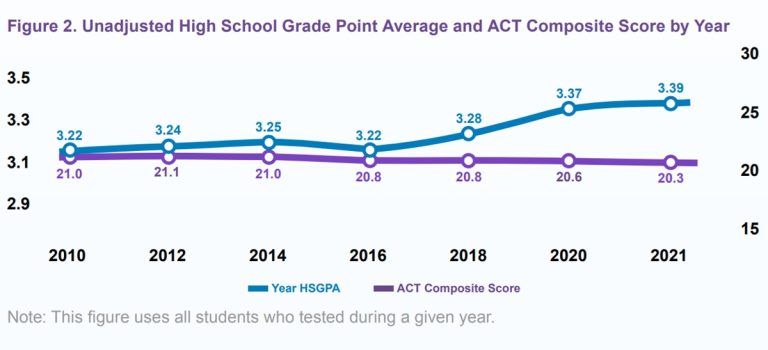
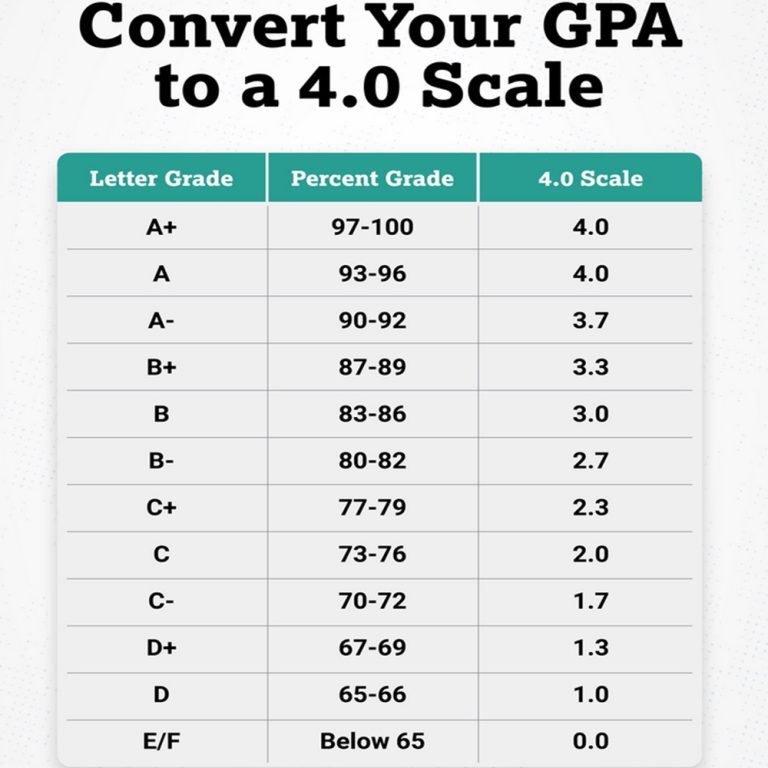
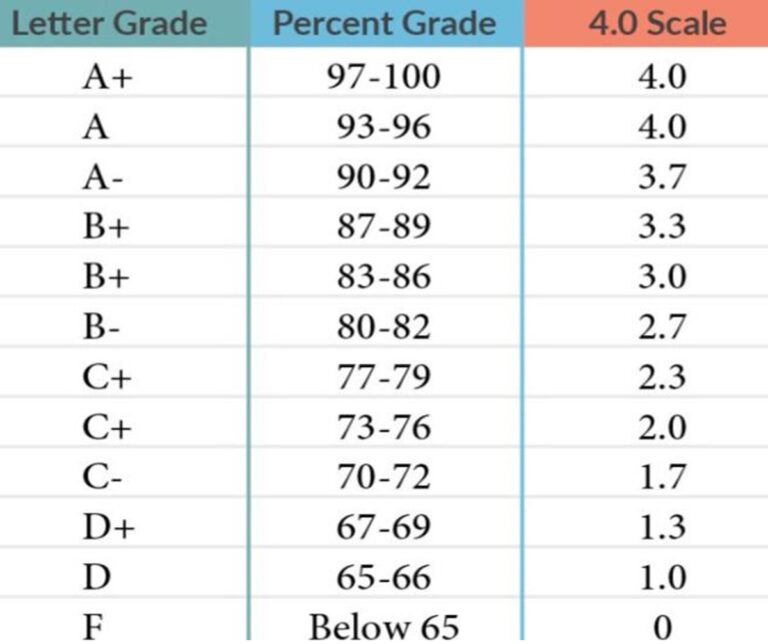

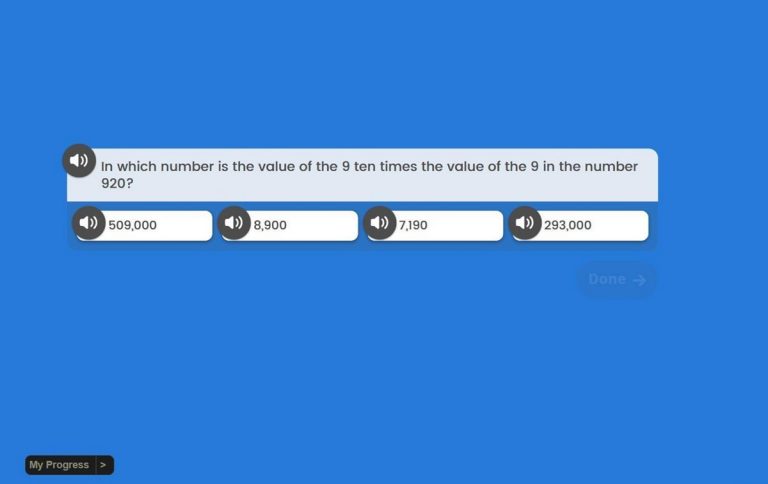
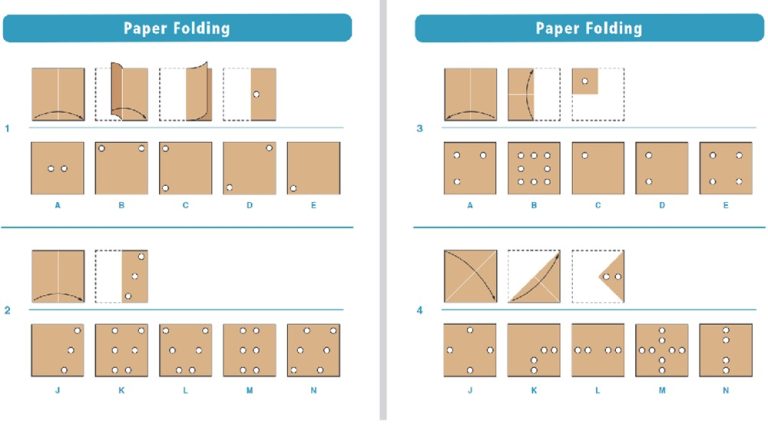
hey i-Ready, got a question. so if I get like, a 70% is that a 5 on the AP exam? trying to figure out how much I gotta study lol
I think the AP Chemistry and Physics Score Distribution 2024 section is pretty cool. But, how do those scores help me become an astronaut lol?
ScienceGeek302, those scores can open up opportunities for college and internships in aerospace! Keep aiming high!
Delighted to see AP LIT Score Distribution for 2024. It’s like peering into the nebula of our collective academic efforts, revealing the luminous outcome of our scholarly endeavors.
idk why everyone’s freaking out about AP scores. isn’t getting into a good college more about like, the whole package? kinda like in sports, u gotta be good at more than just one thing.
Read the part about the easiest and hardest AP courses. Just wondering, does anyone know if there’s like a list of these based on actual data? Or is it more about personal opinion?